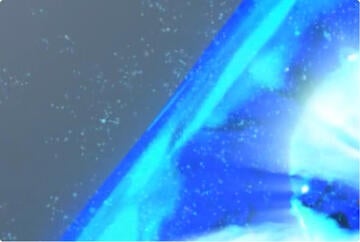Dry Matter, Wet Matter: Does it Matter?
Nick Cave, BVSc, MVSc, PhD, DACVN
Massey University Palmerston North, New Zealand
Overview
When consuming dry and wet diets, even with an equal daily total water intake, animals are not physiologically identical, whether diseased or healthy. This is important because the management of several common diseases includes attempts to reduce urine concentration. The most reliable method for achieving that goal is to increase the dietary moisture content, but it needs to be more than 65% moisture.
More studies are needed to understand the independent role of dietary moisture in health and disease.
Key points
- Thirst:
- Thirst is stimulated directly by organum vasculosum of the lamina terminalis (OVLT ) sensing of increased extracellular fluid (ECF) osmolarity, and indirectly by ADH release.
- Thirst drive is also affected by food ingestion, which increases plasma osmolarity. This drive is less sensitive with age, making geriatrics more susceptible to dehydration.
- A postprandial rise in osmolality is not just due to sodium; the major cause is the movement of water into intestinal tract (ECF in gut lumen). In people, studies show ECF movement from food ingestion drives thirst.
- Water requirements are frequently expressed as 40-60 mL/kg/24 hours. True water requirements may be better expressed relative to the amount of food consumed/energy expenditure.
- Adaptations to dietary moisture:
- Under laboratory or hospital settings, cats will naturally consume a total (voluntary plus dietary intake) of 0.1-0.2 mL/kJ.
- With diets between 5 and 65% moisture, cats adjust voluntary intake so total water intake remains constant— and USG remains relatively constant.
- At 75% moisture cats stop voluntary water intake — and USG begins to decline.
- At 85%, total water intake increases and diuresis results.
- Meal feeding results in lower total water intake than when cats are fed ad libitum.
- When cats are acutely switched from wet to dry diets, there is:
- A delayed increase in voluntary water intake.
- A reduced maximal response in older cats compared with younger cats which suggests an increased risk of dehydration as cats age.
- If the daily dry matter intake is consumed quickly, the cat will be in a state of mild dehydration (hypohydration) until drinking has caught—up with the water deficit.
- Forcing cats to have multiple small drinking episodes does not get rid of temporal delay in water intake, and there is no change in USG.
- Cats fed wet vs dry diets are in different physiological states, even if the total water intake may be equal:
- In a study of cats on wet diet vs dry, the cats on a wet diet had lower UPC, BP and GFR.
- UPC is an independent risk factor for the progression of chronic kidney disease (CKD); in cats a higher UPC is associated with CKD progression.
- With dry diets (less moisture) the ADH secretion is higher.
- Chronic ADH excess may lead to increased BP, GFP, borderline proteinuria, and changes in renal architecture (ADH induces renal tubule hypertrophy/drives mesangial cell proliferation).
- Is there a cost to chronic "excess" ADH in normal cats? If there is a deleterious effect, it is small and hard to measure but there may be an effect in CKD and cardiac disease.
- To reliably reduce urine concentration, at least 75% dietary moisture needs to be fed, and simply “adding some wet food” to a dry food diet is unlikely to have a significant effect on USG.
- Attempts to increase drinking by providing a source of running water has not yet proven to be effective.
- Water as a nutrient needs further study. Questions include:
- Do dry diets increase the risk of CKD, accelerate the progression of CKD once established and increase the risk of dehydration in older cats?
- Can increases in dietary moisture be used to reduce the risk of obesity as studies with high-moisture diets have been shown to alter food intake in ways unrelated to satiety impacts?
Clinical relevance
Healthy or not, cats fed wet vs dry diets are in different physiological states. This understanding impacts the management of several common feline diseases in which increasing water intake to reducing urine concentration is important.


